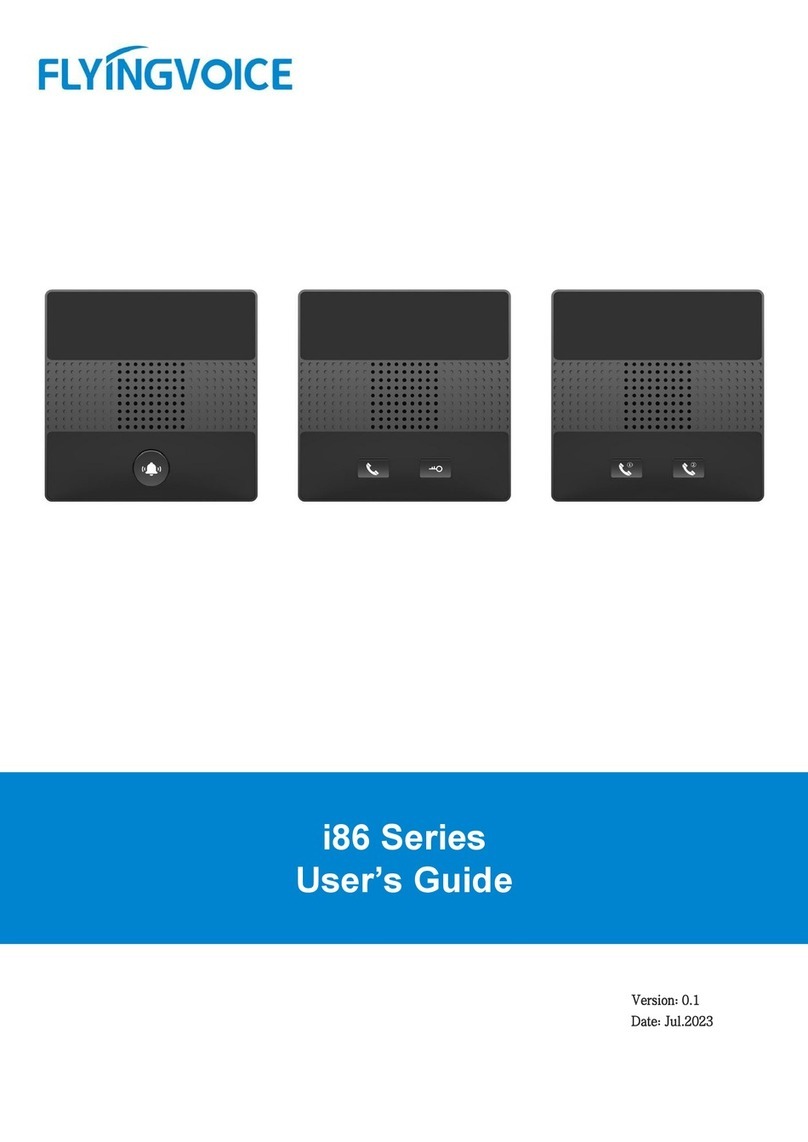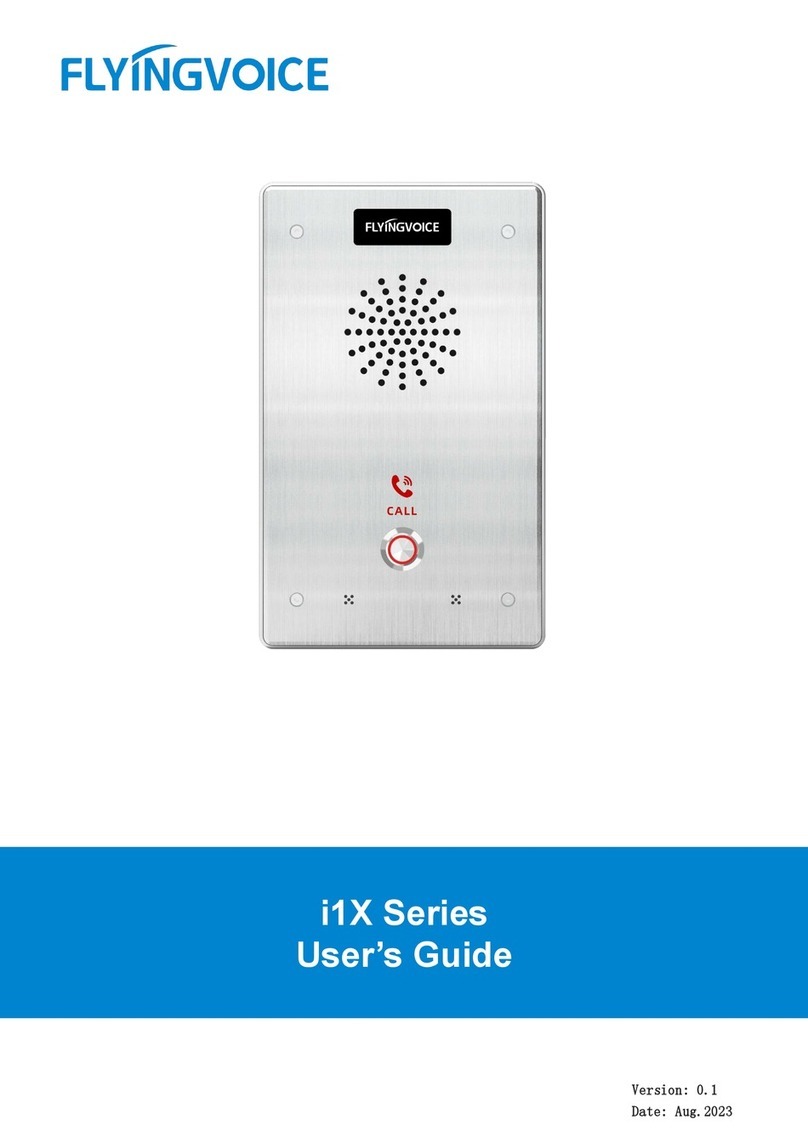
Flyingvoice Network Technology Co., Ltd. I
Copyright
Copyright © 2020 Flyingvoice Network Technology CO., LTD.
Copyright © 2020 Flyingvoice Network Technology CO., LTD. All rights reserved. No parts
of this publication may be reproduced or transmitted in any form or by any means,
electronic or mechanical, photocopying, recording, or otherwise, for any purpose, without
the express written permission of Flyingvoice Network Technology CO., LTD. Under the
law, reproducing includes translating into another language or format.
When this publication is made available on media, Flyingvoice Network Technology CO.,
LTD. gives its consent to downloading and printing copies of the content provided in this
file only for private use but not for redistribution. No parts of this publication may be
subject to alteration, modification or commercial use. Flyingvoice Network Technology
CO., LTD. will not be liable for any damages arising from use of an illegally modified or
altered publication.
Trademark
Flyingvoice®, the logo and the name and marks are trademark of Flyingvoice Network
Technology CO., LTD, which are registered legally in China, the United States, EU
(European Union) and other countries.
All other trademarks belong to their respective owners. Without Flyingvoice ’s express
written permission, the recipient shall not reproduce or transmit any portion thereof in any
form or by any means, with any purpose other than personal use.
Warranty
1. Warranty
THE SPECIFICATIONS AND INFORMATION REGARDING THE PRODUCTS IN THIS
GUIDE ARE SUBJECT TO CHANGE WITHOUT NOTICE. ALL STATEMENTS,
INFORMATION, AND RECOMMENDATIONS IN THIS GUIDE ARE BELIEVED TO BE
ACCURATE AND PRESENTED WITHOUT WARRANTY OF ANY KIND, EXPRESS OR
IMPLIED. USERS MUST TAKE FULL RESPONSIBILITY FOR THEIR APPLICATION OF
PRODUCTS.
2. Disclaimer
FLYINGVOICE NETWORK TECHNOLOGY CO., LTD. MAKES NO WARRANTY OF ANY
KIND WITH REGARD TO THIS GUIDE, INCLUDING, BUT NOT LIMITED TO, THE
IMPLIED WARRANTIES OF MERCHANTABILITY AND FITNESS FOR A
PARTICULAR PURPOSE. FLYINGVOICE Network Technology CO., LTD. shall not be
liable for errors contained herein nor for incidental or consequential damages in
connection with the furnishing, performance, or use of this guide.
3. Limitation of Liability
Flyingvoice and/or its respective suppliers are not responsible for the suitability of the
information contained in this document for any reason. The information is provided “as is”,
and Flyingvoice does not provide any warranty and is subject to change without notice. All
risks other than risks caused by use of the information are borne by the recipient. In no
event, even if Flyingvoice has been suggested the occurrence of damages that are direct,
consequential, incidental, special, punitive or whatsoever (Including but not limited to loss





























